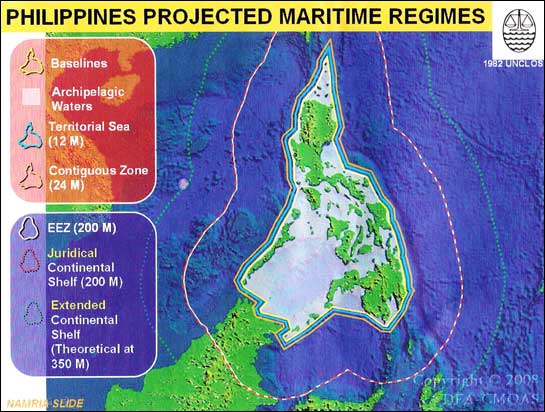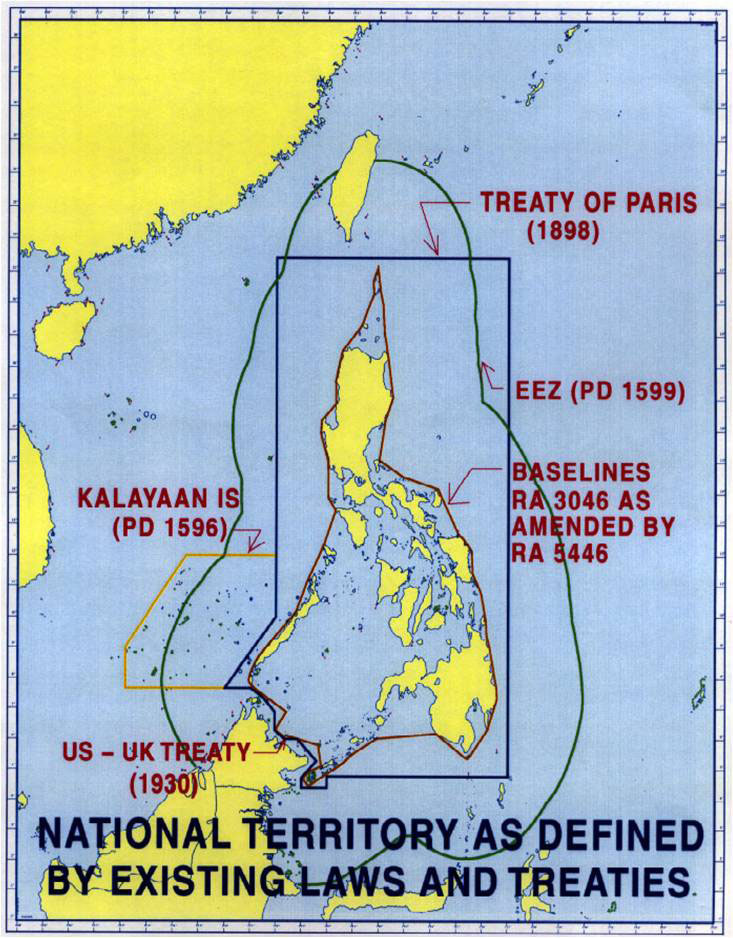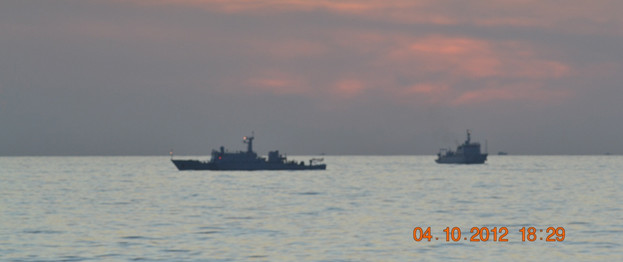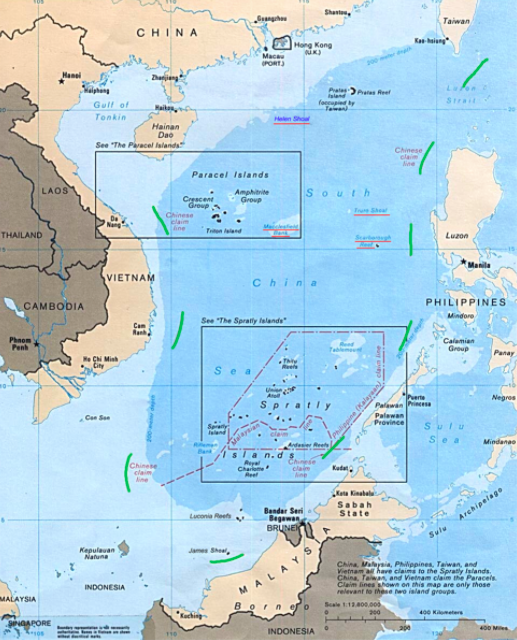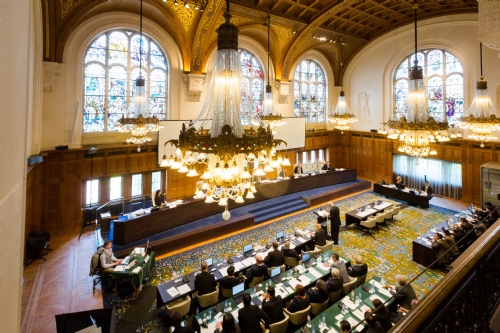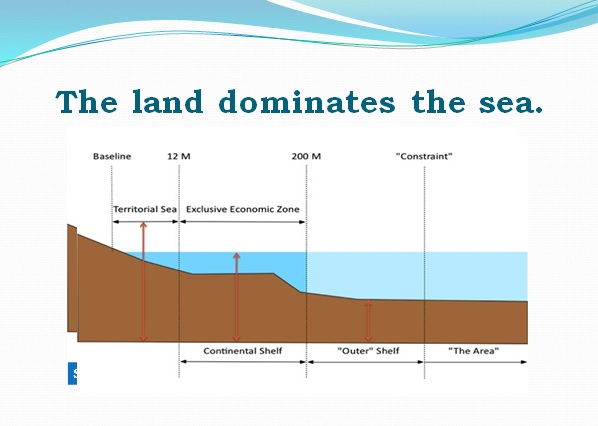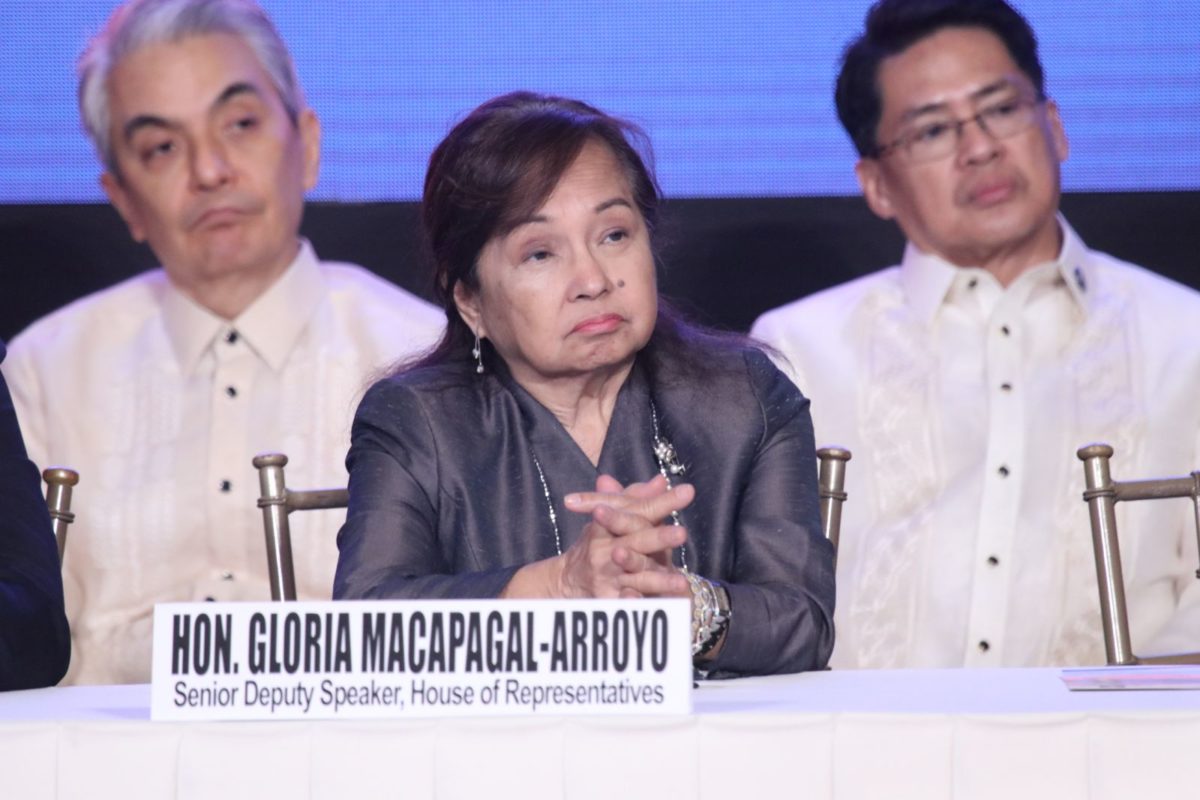NEGLECT by President Gloria Arroyo and squabbles over turf and money have derailed government efforts to establish the country’s new archipelagic baseline, and may jeopardize the Philippines’ claim over resource-rich Spratlys that fall within its extended continental shelf.
With a year left before the May 13, 2009 deadline for filing its claim for an extended continental shelf under the United Nations Convention on the Law of the Sea (UNCLOS), the Philippines is nowhere near completing the studies, surveys and report required to bolster the country’s claim over its extended territory.
The UNCLOS, which the Philippines ratified 24 years ago, requires coastal states to declare their extended continental shelf, which is the underwater extension of the land.
In Congress, lawmakers are debating a redefined archipelagic baseline bill. Although there is no deadline to the filing of a country’s archipelagic baseline with the UN, it is, however, going to be the basis for measuring all maritime regimes or zones: territorial sea (12 nautical miles from the baseline), contiguous zone (24 nm), economic exclusive zone (200 nm), continental shelf (200 nm) and extended continental shelf (350 nm).
The drafting of the country’s claim under the UNCLOS is a tale of infighting among agencies wanting to take the lead and subsequently controlling the billions of pesos of government fund for that undertaking, including a $250,000 grant from the Norwegian government.
It is also a story of President Arroyo’s failure to give importance to the complicated tasks involved (such as marine hydrographic, gravity and magnetic surveys and studies) to come up with data required in drafting territorial baseline despite the urgency of a May 2009 deadline.
From Cabinet- to mid-level committee
In 2001, President Arroyo abolished the Cabinet Committee on the Treaty on the Law of the Sea, created under Ferdinand Marcos and maintained by the three succeeding presidents – Corazon Aquino, Fidel Ramos, and Joseph Estrada. Arroyo replaced it with the mid-level Maritime and Ocean Affairs Center (MOAC), which was just a unit in the Department of Foreign Affairs (DFA) then headed by Assistant Secretary Alberto Encomienda.
It was only in March 2007, after six years, that Arroyo restored the issue as a Cabinet-level concern when she issued Executive Order 612 creating the Commission on Maritime and Ocean Affairs (CMOA) under the Office of the President. The CMOA is to be chaired by the Executive Secretary with the Justice Secretary and Foreign Affairs Secretary as vice chairs.
The initial members were the departments of national defense, environment and natural resources, budget and management, transportation and communications, tourism, trade and industry, National Security Council, Bureau of Fisheries and Aquatic Resources, National Mapping and Resources Information Authority (NAMRIA), and the Philippine Coast Guard.
Arroyo designated the Department of Foreign Affairs was designated as the lead agency and secretariat of the CMOA. She also committed a major oversight: she excluded from the EO creating CMOA the Department of Energy, which had been involved in doing scientific studies on the country’s continental shelf with other agencies.
It took nine months for Arroyo to correct the lapse. On Dec. 17, 2007, she issued EO 612-A including DOE in the CMOA “in order (for it) to be able to fully contribute its knowledge and expertise” in the preparation of the country’s claim for extended continental shelf.
Bureaucratic wrangling
Outside the Palace, however, there were other initiatives toward complying with the UN requirement. In 2001, the University of the Philippines, through its National Institute of Geological Sciences and the UP Law Center’s Institute of International Legal Studies, undertook a project, “Delineation of the Outer Limits of the Philippine Continental Shelf,” with the DOE, NAMRIA and the Mines and Geosciences Bureau.
UP law professor Harry Roque, an international law expert, recalled the confusion on who was to take the lead in this project. Foreign affairs officials wanted the DFA to lead because it was in charge of submitting the claim to the UN. DENR said they should take the lead because the project involves natural resources and NAMRIA is its line agency. The NSC also got into the picture, citing security considerations.
In the end, the project proposed an executive order creating an interagency national committee with the president or vice president as chair and the DFA and DENR as vice chairs. When the UP-led project ended months later, Arroyo had not created any such committee.
In the case of MOAC, interagency coordination was saddled by its not being Cabinet level; thus, no policy decisions could be made. To be fair, Encomienda presented updates on the project before the Cabinet cluster on security attended by President Arroyo.
There were also personality differences among MOAC members. Some did not regard highly the entry of a retired police general, Dionisio Ventura, as head of NAMRIA, while others resented what they said was Encomienda’s “soliloquy” during meetings. Worse, some agencies refused to share data with MOAC.
Bureaucratic wrangling also marred baseline-related activities of the past administrations. During the presidency of Fidel V. Ramos, interagency power play derailed a project that would have strengthened the Philippine position to include a portion of the disputed Kalayaan Island Group (KIG) within the Philippine archipelagic baseline. The KIG is part of Spratlys.
Aborted lighthouse project
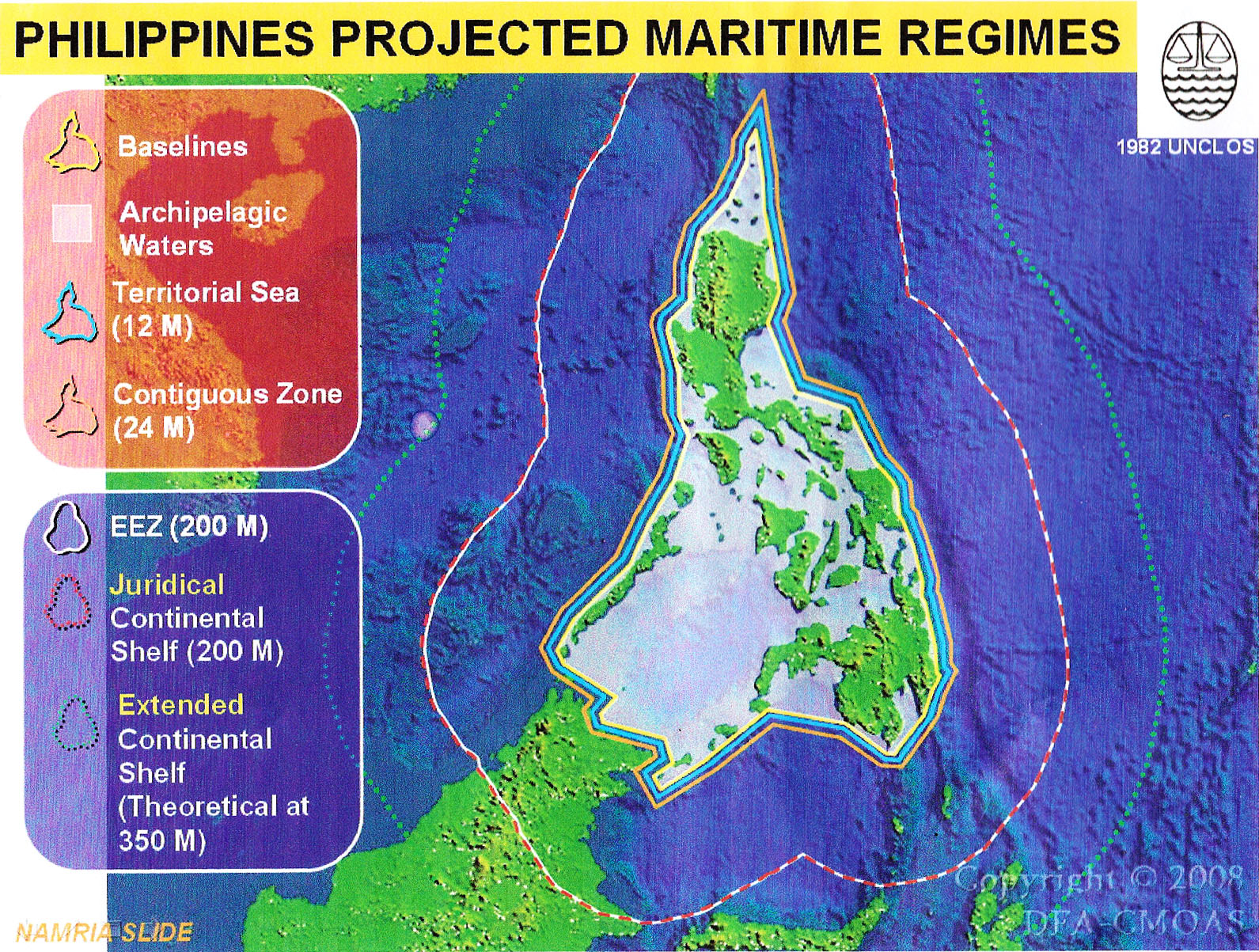
Documents obtained by Vera Files showed that as early as 1994, Ramos ordered various agencies to work together on projects to redefine the country’s archipelagic baseline.
In mid-1994, then NAMRIA administrator Jose Solis (now congressman of Sorsogon) sought financial assistance from then Energy Secretary Delfin Lazaro for the building of lighthouses on three islets in the KIG: Nares Reef, Recto Bank or Marie Louise Reef, and Sea Horse Bank.
This was about the time that the Chinese were starting to occupy Mischief Reef in the KIG, which is only 135 nautical miles away from the Philippine baseline. Lazaro supported the lighthouses project and sought Ramos’ approval to draw funds from the DOE’s Special Account.
In a memo to Ramos, Lazaro cited possible international complications and risks of the lighthouse project: “While this project will be beneficial to the Philippines in terms of expanding available area not only for petroleum exploration but for other natural resources as well and that the lighthouses will also be important navigational aids, we wish to point out that actual construction of the lighthouse could provoke international protests from other countries (such as China and Vietnam) including possible physical stoppage of the work by their navies.”
Lazaro’s request for a go-signal got stalled in Malacanang. His successor, Francisco Viray, pursued the lighthouse project. In a memo to Ramos dated Dec. 12, 1994, Viray said: “Once established, these lighthouses will serve as legal basis in determining the new baseline. Other countries are doing the same things to fortify their territorial claims.”
Viray said the presence of lighthouses would reinforce the country’s claim over the Reed Bank. A lighthouse would have qualified Reed Bank, which is within the 200-mile exclusive economic zone, to be part of the archipelagic baseline. This would increase Philippine archipelagic waters within the baseline by 11,042 square nautical miles or 7,750,000 hectares.
Documents obtained by Vera Files showed that on Feb. 15, 1995, Ramos finally approved the release of P178-million for the mapping, survey, and construction of lighthouses in the KIG. He instructed the DOE to supply the funds, and the NAMRIA to supervise the design and construction of the lighthouse as well as the coordinates of the benchmarks identifying the territorial limits based on the 200-nautical mile EEZ. Formal public bidding was waived “in view of the urgency and confidentiality of the project.”
But soon after the funding was approved, Ramos himself revoked NAMRIA’s authority to oversee the project and transferred it to the Philippine Navy upon the recommendation of Defense Secretary Renato de Villa.
This led Solis to complain: “The NAMRIA has been religiously working for the immediate implementation of the KIG project. I would like to inform the Executive Secretary that when there were still no available funds for the project, it was the NAMRIA which did all the work to convince the funding agency to support the project. However, when the funding was approved and the authority was given to the NAMRIA, the Cabinet made a decision to transfer the project to the Philippine Navy.”
For one reason or another, the KIG lighthouses never got built—and the Philippines has lost its chance to build them. In 2002, the Arroyo government signed the ASEAN-China Code of Conduct in the South China Sea that bans construction of new structures on uninhabited islands in the disputed areas. Brunei, China, Malaysia, Taiwan, Vietnam and the Philippines are claiming wholly or partially about 160 islands in the South China Sea.
Lack of government funds
A number of baseline and continental shelf legislations have been filed in both chambers of Congress. In the Senate, Sen. Leticia Shahani filed such a bill in 1993. A proposed baseline law authored by detained senator Antonio Trillanes IV is pending in the 14th Congress. The bill seeks to amend existing baseline to include Scarborough Shoal and treating the KIG as a regime of islands to conform to the criteria set by UNCLOS.
In the House of Representatives, Cebu Rep. Antonio Cuenco’s bill has been returned to the committee level after reaching second reading last December. There were earlier initiatives in the House by then representative and now senator Francis Escudero and Rep. Gerry Salapuddin. “The project was stalled due to lack of available funds,” Salapuddin said back then.
Indeed, it is the government’s failure to provide the money that has slowed down projects needed to revised the baseline law and identify the extended continental shelf. After receiving an initial P50 million funding last year, CMOA is getting only P10 million in the 2008 budget.
It also took Malacanang five years to include the budget needed for the extended continental shelf project. A source privy to the project said NAMRIA had initially estimated that P10 billion would be needed for the scientific and technical surveys. Deputy Executive Secretary for Legislative Liaison Jake Lagonera balked, saying, “Masyado yatang malaki ‘yan (That’s too much).”
Indonesia had spent about $100 million for its project. But MOAC had said about P500 million would be enough for the extended continental shelf project.
The source said the Palace also found NAMRIA’S second proposal, totalling P2.9 billion, on the high side. It finally approved a P1.7 billion funding to be released over several years.
The Arroyo administration’s last-minute effort to meet the May 2009 deadline is reflected in NAMRIA’s P 1.2 billion budget for this year. For the first time, it is getting a P380 million allotment for the extended continental shelf delimitation project on top of the P547 million for its regular mapping and remote sensing activities.— By Ellen Tordesillas, Chit Estella, Luz Rimban, Booma Cruz, Yvonne Chua and Jennifer Santiago
